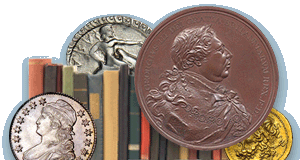
PREV ARTICLE
NEXT ARTICLE
FULL ISSUE
PREV FULL ISSUE
BEWARE TRANSLATED PERSON AND PLACE NAMESGary Beals of Segovia, Spain submitted these thoughts on the use and misuse of translated names of people and places. Thanks. -Editor
One of my gripes about historians is the translation of people’s names. I maintain that the name someone was given in his or her native land cannot and should not be translated — doing so only confuses things. This translation of names goes on in various languages. Most recently Ken Berger, my friend in San Diego, noted that “Isabella is Elizabeth in Spanish,” Well, no. Isabel is Elizabeth in Spanish and Isabella (also sometimes Isabela) is Isabel in English. And while we are at it, her husband and co-ruler was Fernando not Ferdinand. Confusion abounds when names are translated. When I read the Spanish press journalists often refer to Isabel II as the Queen of England rather than using Elizabeth. This only adds confusion because the only other Isabel who served as Queen in Spain was Isabel II 18_ ) Here a rant from my 2015 Spanish-English numismatic dictionary Numiscadero: A modest 21st century proposal: let’s translate words, not names This process deals with people too: Not Pope Francis but Pope Francisco. There have only been two women named Queen Isabel, (not Isabella) both in Spain. That name translates to Elizabeth, and sometimes in Spanish writing we see Queen Elizabeth II of Great Britain referred to as Reina Isabel II, and that baffles readers for a few seconds. And her son is not Principe Carlos but Prince Charles. Spain’s King Juan Carlos’ name is not translated English language press largely because no one is named John Charles in English. Now we have his son, King Felipe VI of Spain — but, please, he is not King Philip. These translated names go far back in time. Centuries ago when it took two months to return home from a grand tour of Europe a wealthy traveler could easily forget how to spell all the places visited. So city of Livorno in Italy since the 1500s has been called Leghorn by the British. To read the earlier E-Sylum article, see:  Wayne Homren, Editor The Numismatic Bibliomania Society is a non-profit organization promoting numismatic literature. See our web site at coinbooks.org. To submit items for publication in The E-Sylum, write to the Editor at this address: whomren@gmail.com To subscribe go to: https://my.binhost.com/lists/listinfo/esylum All Rights Reserved. NBS Home Page Contact the NBS webmaster 
|